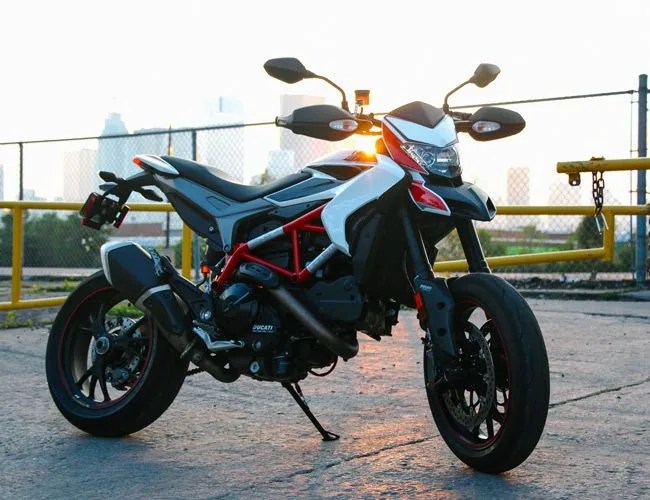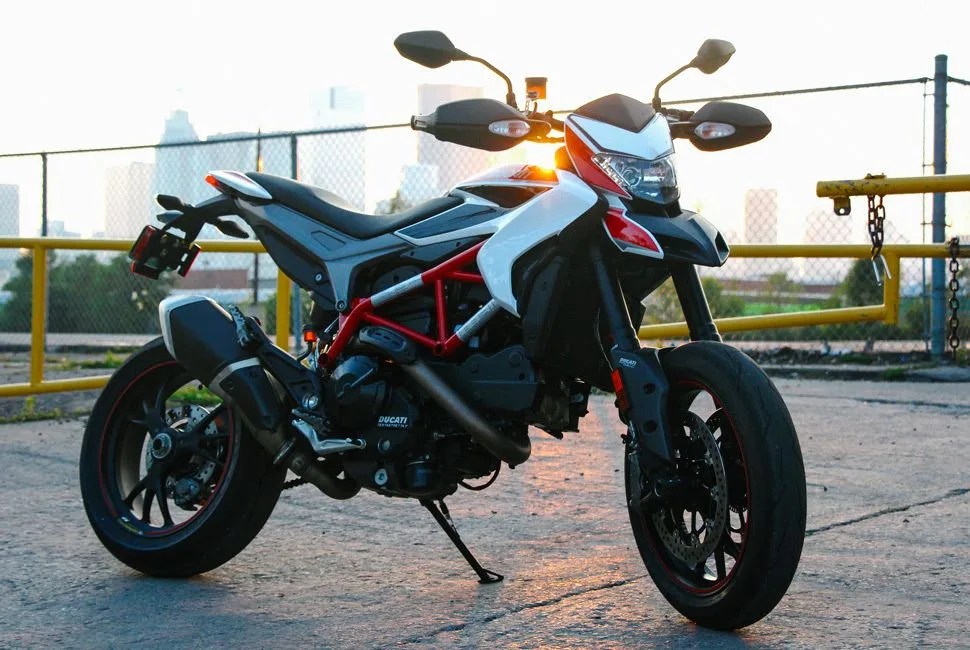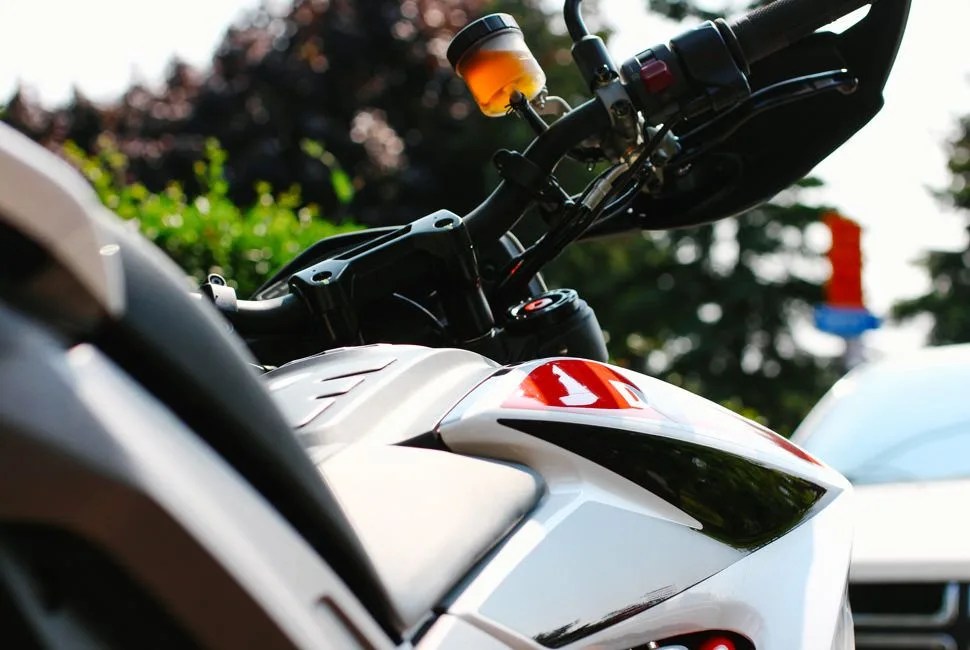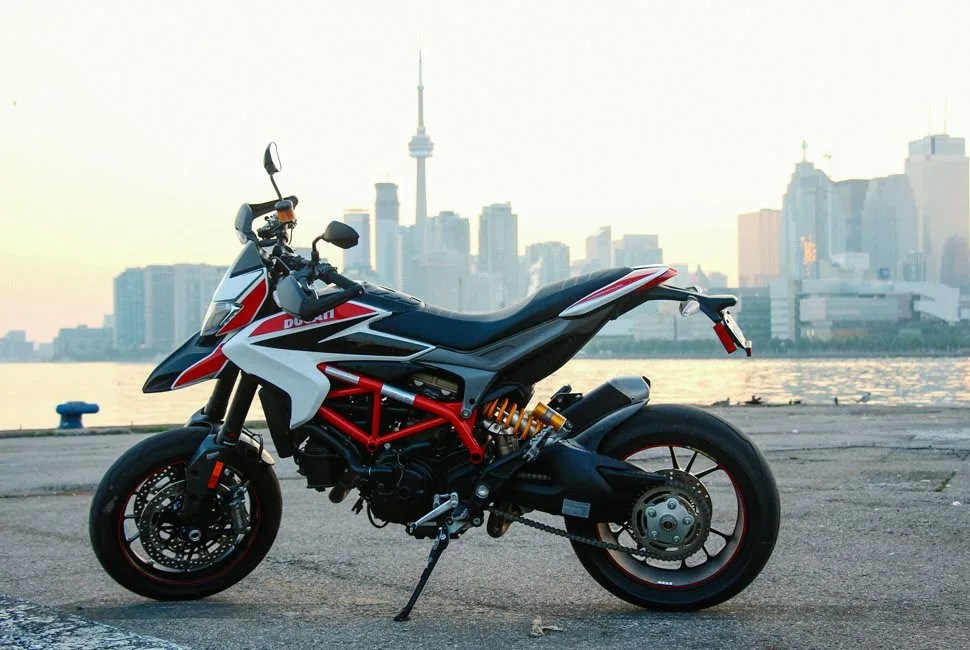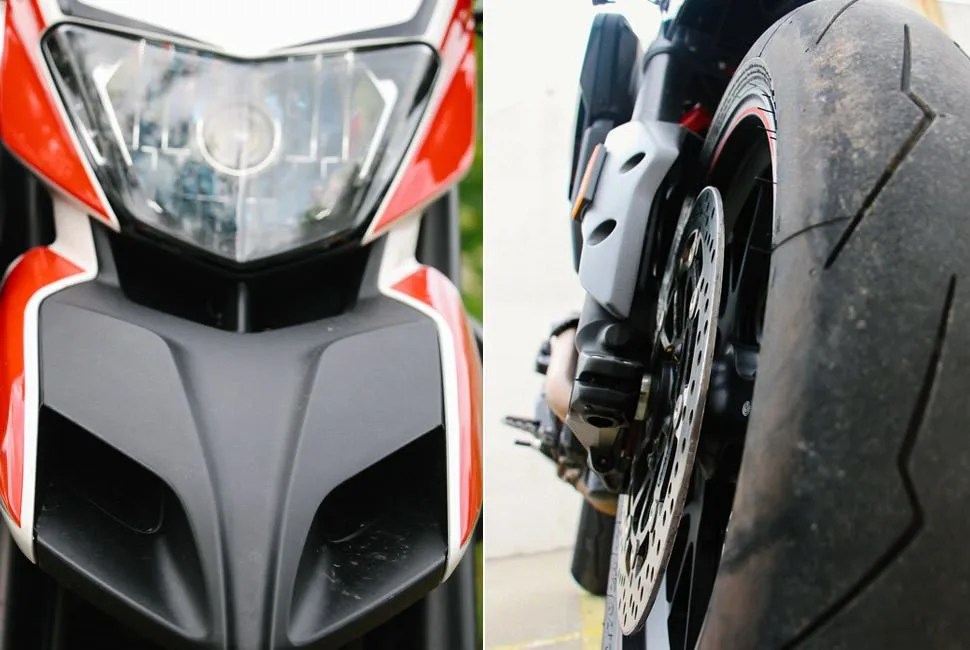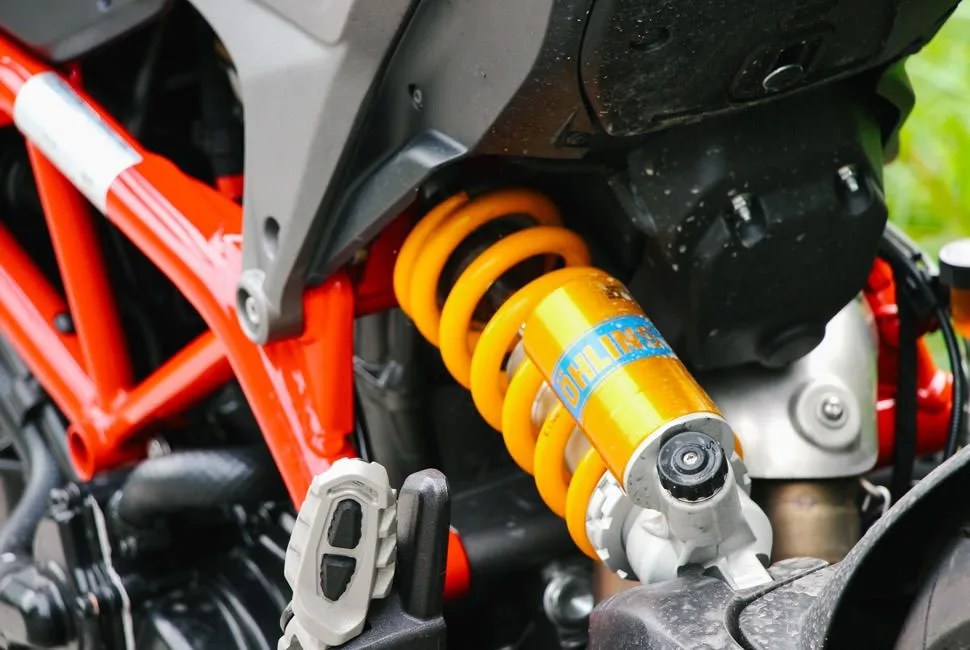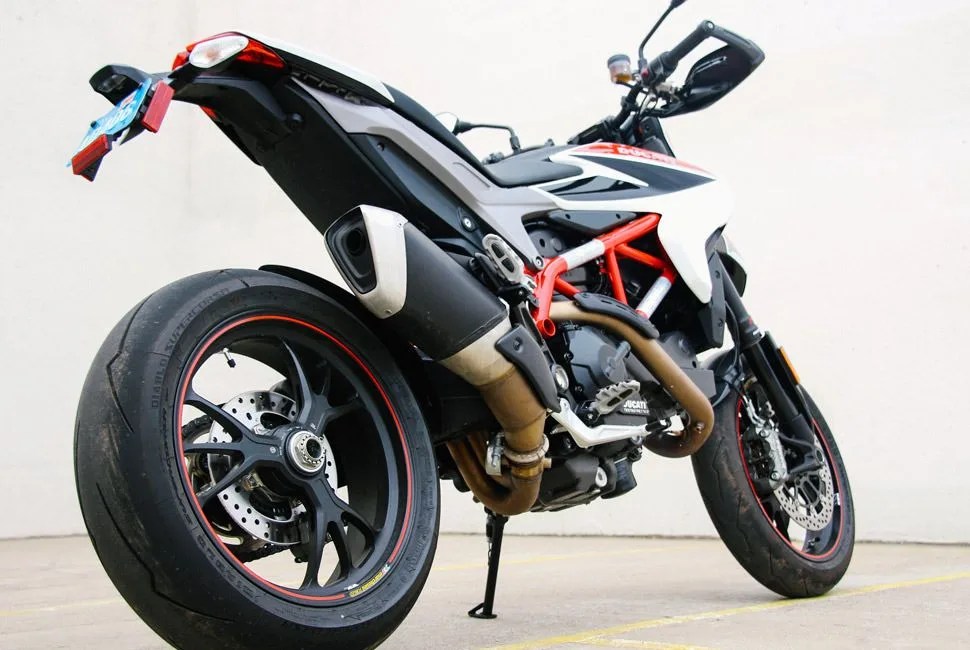8 photos
One can’t help but giggle a little at the word “Hypermotard”. It connotes contradiction and sounds completely juvenile. And laying eyes on it only further weakens composure and heightens confusion: that slender trellis frame, pointy beak and lofty saddle all scream dirt bike, while the top-shelf race components and Pirelli Supercorsas wrapped around its Marchesini-forged wheels (stolen from the Panigale parts bin) beg for twisting tarmac. It’s a Dr. Moreau-engineered duck-billed platypus infused with cheetah DNA: a bike clearly designed for yobs, built solely to satisfy the devilish voice buried deep within the psyche, to tease the promise of lost licenses with every twist of the grip.
GP’S ITALIAN STALLIONS: Octane Icon: Ducati Monster | Behind the Wheel: Ducati Panigale 1199 R | Quick Spin: Ducati Full Line
When its concept debuted at EICMA in 2005, the Pierre Terblanche-penned Hypermotard immediately joined a growing list of icons under the vaunted Italian marque. Designed to compete in the growing Supermoto motorcycle category — essentially dirt bikes on street tires — the Hypermotard was an instant success. The concept took home Best of Show honors, but the success didn’t stop there. Public demand was so fevered that the Ducati website crashed from traffic. Upon its release, the Hypermotard 1100S even notched Ducati its first Pikes Peak win since 1916, cementing its reputation as an omni-capable contender in the category.
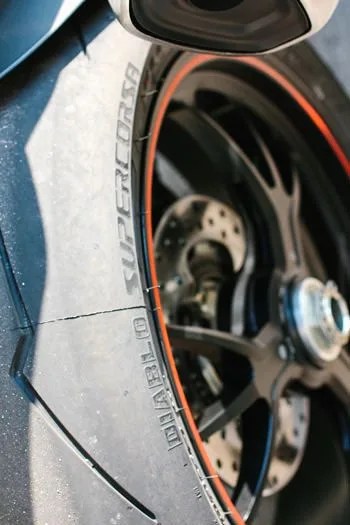
Available in standard or SP ($14,995) trim, the Hypermotard design has remained true to Terblanche’s original ethos and has suffered only slight aesthetic changes since 2005. Gone are lovable quirks like the folding bar-end mirrors and under-tail exhaust, in favor of more functional evolutions of both. Gone too is the 1100cc Desmodromic engine, replaced by a smaller, lighter and more efficient mill; Ducati’s new 821cc, 11-degree Testastretta L-Twin motor has 110 horsepower and 66 lb-ft of torque, and it loves to rev. While there is a little less twist, power wheelies can still be commanded at will and there are almost twenty additional bucking-mad horses. Thankfully, Ducati’s ride-by-wire DTC-enabled (Ducati Traction Control) system can reign them in easily.
I started my stint aboard the SP in “Wet” — the most intrusive of the three riding modes (Wet, Sport and Race), which drops the available horsepower to 75, lowers torque output and ramps up the traction control and abs braking settings. It seemed best to treat this experience like a theoretical first date with Stacy Keibler: embrace that svelte and slender frame, but also respect the 35-inch inseam — one wrong move, kiddo, and you’ll get booted to the dry pavement. That plan changed within one block. So smooth is the throttle response, friendly the ergonomics and communicative the suspension on the SP that my confidence and curiosity instantly spiked. I toggled over to Race mode.
